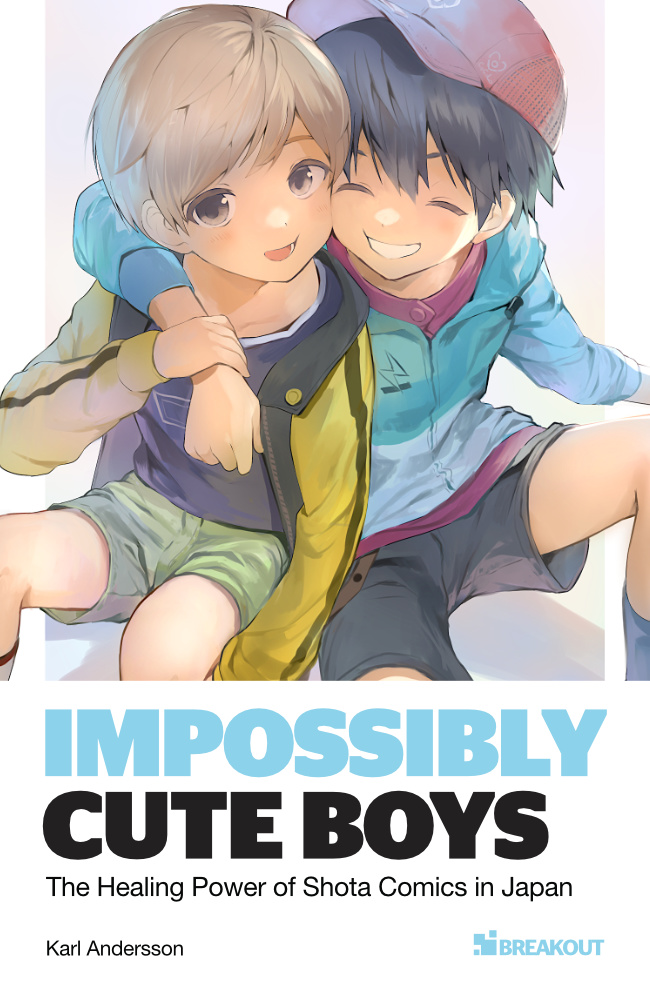This is a summary of the rise of shota as a genre, as described in Watanabe Yumiko’s essay “Shota research” (ショタ研究), featured in Otakuology Annual 1998.
The 1981 anime Six God Combination Godmars (六神合体ゴッドマーズ) set off a male ✕ male boom and had yaoi established as a genre in the dōjinshi world.
1981 was also the year that Jump started serialising Captain Tsubasa (キャプテン翼), which is described as the very first “break” not only for yaoi but also for shota: For the first time, the female dōjinshi creators were older than their characters. In “Cappu Tsuba’s” (C翼) heyday in 1984-86, participation at Comic Market increased dramatically and women were in majority (whereas men had been in majority during the lolicon boom).
The yaoi boom peaked in 1986, when both Captain Tsubasa and Saint Seiya (聖闘士星矢) were broadcast as animes. The “male characters [made] by women boom” (女性による男性キャラブーム) was so influential that it even affected the content of Jump. However, shota was still not recognised as a genre of its own, although there were scattered series that obviously played into the burgeoning interest in young boys, such as Ganbare, kickers! (がんばれ!キッカーズ) and Mister Ajikko (ミスター味っ子).

This all changed with the 1988 anime Mashin Hero Wataru (魔神英雄伝ワタル, Mashin Eiyūden Wataru), which Watanabe-san describes as a “shota trigger”. Previously, male characters had been tall and had long faces, but with Wataru, the protagonist was drawn as a cute boy with a smaller body, which was a “fresh” surprise for the viewers.
Wataru started out as a robot gag anime for children, but became an iconic shota series when Wataru’s rival Toraō (虎王) was introduced halfway through the series. (Episode 21 of 45 to be exact, as this is exactly where I am in my own watching as I’m writing this. In the English subtitles Toraō is called Tiger Prince.) The interaction between Wataru and Toraō captured the hearts of shotacons and awakened a general awareness of a “shota mind”; starting with Wataru, the “cute boy in shorts” character would become popular.
In summary, Watanabe-san argues that Wataru was the turning point that let shota break lose from yaoi and become a genre of its own.

Building on the first era of shota, Wataru’s creator Sunrise Studios would continue to create robot animes aimed at children, most notably Mado King Granzort (魔動王グランゾート) from 1989.
Granzort is almost exactly like Wataru, but with amazing music, in my opinion, and Daichi is a bit older than Wataru, and he has a magic skateboard instead of magic roller skates.

Other animes that rode on the first shota wave:
- 1990: Brave series (勇者シリーズ)
- 1991: Matchless Raijin-Oh (絶対無敵ライジンオー) of the Eldran series (エルドランシリーズ)
- 1992: Chō Dendō Robo Tetsujin 28-go FX (超電動ロボ 鉄人28号FX)
- 1992: Super Bikkuriman (スーパービックリマン)
- 1993: Nintama Rantarō (忍たま乱太郎)
Three works that attracted male shota fans
In 1994 the shota world changed in an instant by adding male fans to the female core of shota fans. This happened through these three animes:
- Akazukin Chacha (赤ずきんチャチャ)
- Brave Police J-Decker (勇者警察ジェイデッカー)
- Yamato Takeru (ヤマトタケル)

Akazukin Chacha was a shōjo anime, but which was watched by many non-shota men. However, the boy characters Shiine-chan, Yuuta-kun, and Loka in these series had a big effect on male shota fans, or maybe male fans in general.
What these characters had in common was something like “he’s a boy but he’s cute”, or “he is girl-like but it is in fact a boy” – which can be said to be the mysterious allure of shota. In addition, they were not hot-blooded types, but rather feminine, with healthy and cute features, which might have attracted male shota fans.
One should notice here that Watanabe-san writes about a certain kind of male shota fan. There are other male shota fans who like boys precisely because they are boyish and masculine. I think Watanabe-san’s interviewees, who call themselves “genuine” (真性) shotacons, belong to this group, and so do many of Shotaology’s readers. However, the genre’s popularity depended on a certain mainstream adoption which would not have been possible without the “male shota fans” that Watanabe-san writes about.
As shota gained clout as a genre, male shota fans founded the specialised dōjinshi event Shotaket, which had 80 circle participants and 700 general participants in 1998 – most of them men.
Shota’s momentum can be seen in the continuous spreading of hit works like:
- 1995: Romeo’s Blue Skies (ロミオの青い空)
- 1995: Neon Genesis Evangelion (新世紀エヴァンゲリオン)
- 1996: Bakusō Kyōdai Let’s & Go!! (爆走兄弟レッツ&ゴー!!)
- 1996: Detective Conan (名探偵コナン, “Case Closed”)
- 1997: The King of Braves GaoGaiGar (勇者王ガオガイガー)
- 1998: Bakusō Kyōdai Let’s & Go MAX (爆走兄弟レッツ&ゴーMAX)
And this was only Watanabe-san’s summary until 1998, when her essay was published! I’m not very knowledgeable in mainstream anime, but I would assume that works like Hunter ✕ Hunter show that the shota aesthetics continue to be spread and appreciated.
Maybe you can come up with more examples since 1998? Please comment!


Thanks so much for translating this. I’ve been researching bara and shota for years with my degree in queer studies and even do midnight panels about them at anime conventions. I’m glad someone is finally able to translate some of the older stuff that may have been forever lost outside of Japan. Unfortunately I don’t know any Japanese so I’ve hit a brick wall waiting for stuff to eventually get translated. Please Keep Up Work Great Work. Have y’all thought about starting a social media group or forum to share new research and info because I would love to share what I’ve learned too.
Wezley – thanks for your comment and for finding your way here! Yes, let’s share research. I’ll look into creating a forum, as social media will be unreliable.